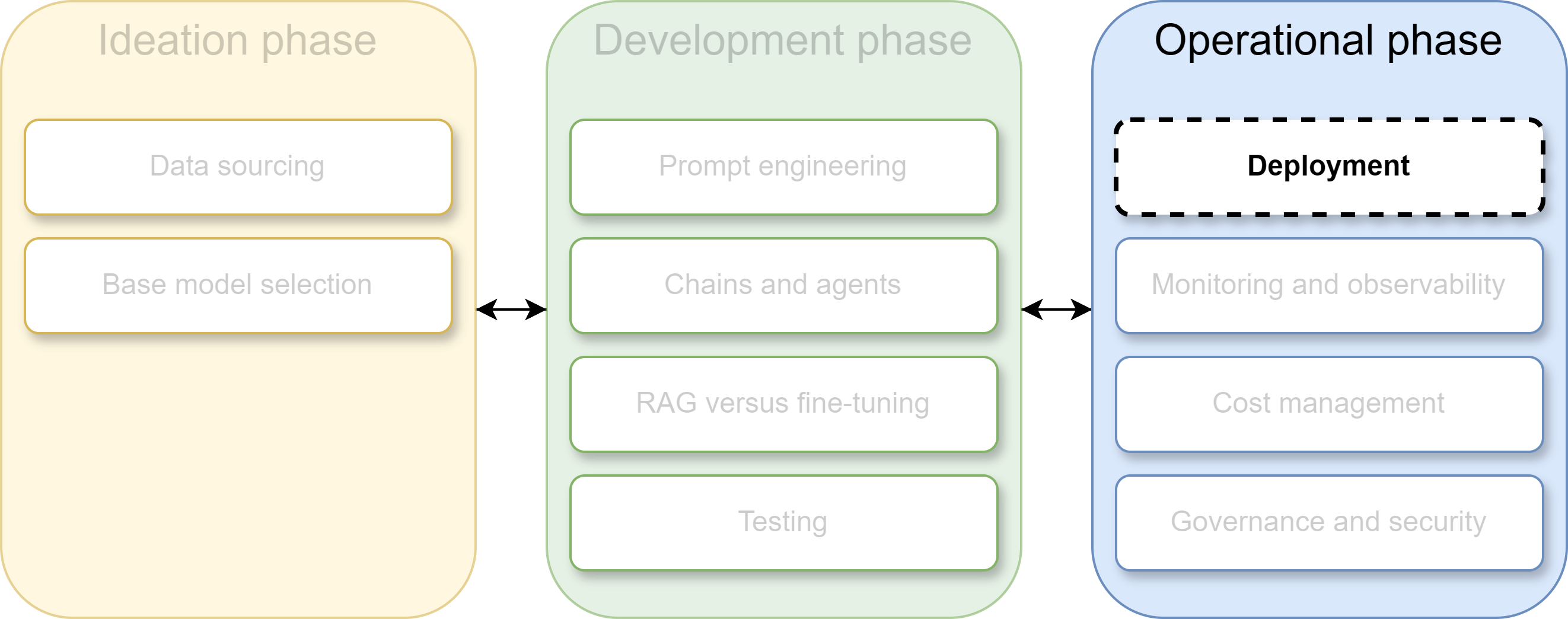Deployment
LLMOps Concepts

Max Knobbout, PhD
Applied Scientist, Uber
LLM lifecycle: Deployment

Moving to deployment
![]()
- No one-size-fits-all!
- An application may include a chain/agent logic, vector database, LLM, and more
- Each component needs to be deployed and work together
Step 1: Choice of hosting
- Private/public cloud or on-premise hosting
- Many cloud providers offer solutions for LLM hosting and deployment

Step 2: API design
- APIs let different software talk to each other
- Design affects scalability, cost and infrastructure needs
- Security is crucial, controlled with API keys!

Step 3: How to run
Options:
- Containers
- Serverless functions
- Cloud managed services
Advantages/disadvantages like costs, scalability, efficiency and flexibility


CI/CD
Continuous Integration (CI):
- Source: Retrieve source code
- Build: Create a container image containing the code
- Test: Perform integration tests
- Register: Store the container in a registry
Continuous Deployment (CD):
- Retrieve: Retrieve container from registry
- Test: Perform deployment tests
- Deploy: Deploy container to environments:
- Staging
- Production
Scaling
![]()
- LLMs might need specialized GPU hardware.
Scaling strategies:
- Horizontal: Add more machines
- Vertical: Boosting one machine
Horizontal for traffic, vertical for reliability and speed
Let's practice!
LLMOps Concepts

